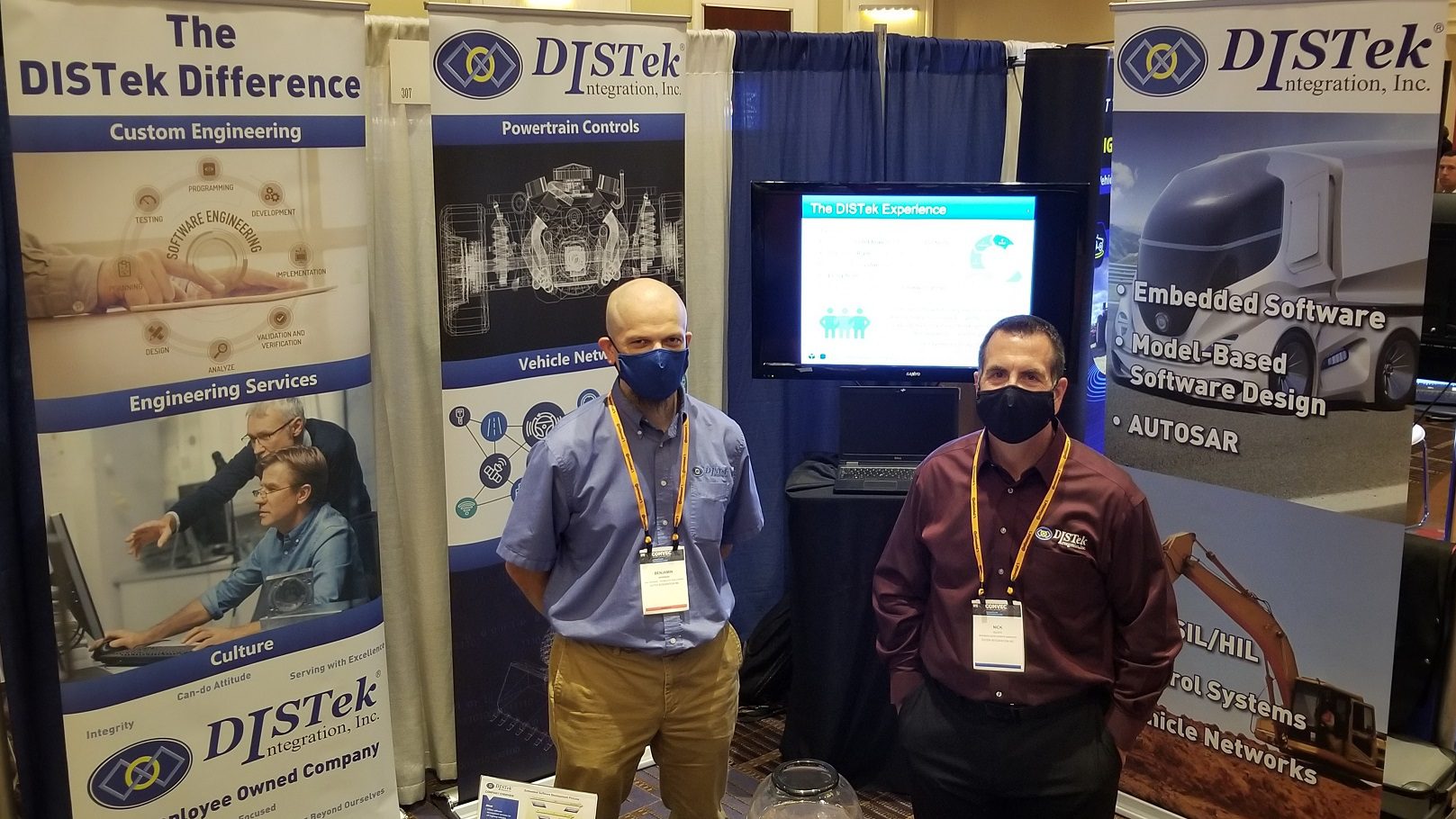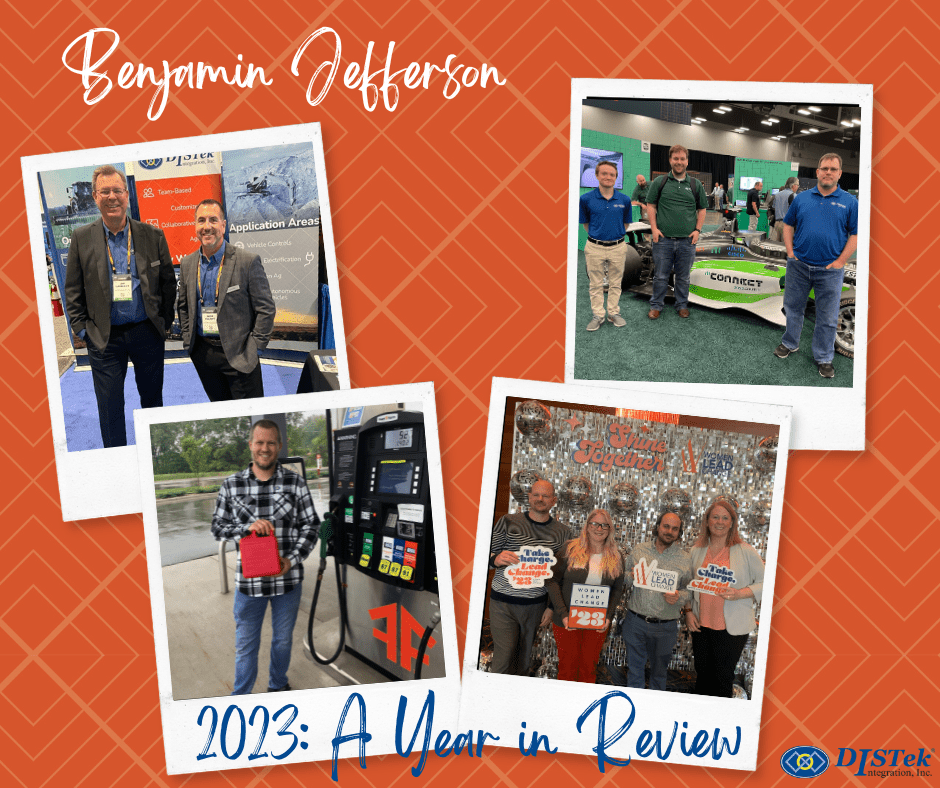I had the opportunity once again this year to attend COMVEC 2021 with fellow DISTekians Nick Elliott and Benjamin Jefferson. COMVEC, (Commercial Vehicle Engineering Congress), is a conference sponsored by the SAE (Society of Automotive Engineers). It is dedicated to discussing the latest and future trends pertinent to commercial vehicles in the on-highway, agricultural, construction, industrial, military and mining sectors. The theme of this year’s conference was “Energy, Sustainability, and the Future of Commercial Vehicle Transportation”.
COMVEC serves the same industries as DISTek, as we provide software engineering solutions for the mobile off-highway and commercial vehicle market. As we have for the past decade, we participated this year with a booth in the exhibit hall. This provided us with the opportunity to meet industry leaders, including some whom are current clients and others that will be future clients. Nick Elliott, DISTek’s Sales Manager, was also on the conference planning committee and served as a moderator for a panel discussion on fuel cells.
This years conference was held in a hybrid format with 790 total registrants. 444 people were in attendance at the exhibition hall and 346 attended virtually. Many of the live talks and panel discussions were also broadcast for online viewing. The ability to ask questions of the presenters was enabled for all attendees through an ‘App-based’ Q&A for each of the live sessions. The exhibition hall showcased hardware and software solutions for the industry.
One of the topics that I found particularly interesting pertained to alternative fuels. Peeking that interest is due to the technologies being developed and evaluated as a shift away from conventional diesel engines as lower NOx and greenhouse gas regulations come into play. Internal combustion engines (ICE) will continue to be utilized in the market for some period of time. By implementing alternative fuel(s), commercial vehicle fleets have the opportunity to reduce their carbon footprint. Here are some of the alternatives as discussed during COMVEC:
- Full Battery Electrics: can this be a practical solution for long haul trucking considering the obstacles to implementation, such as:
- Range: Today the limits are 250 – 300 miles
- Time to fuel:
- Diesel can be fueled at 100 – 250 mi/min
- Electric delivery is approximately 24 mi/min at 3 MW (4-10 X diesel) or 8 mi/min at 1 MW ~12-30 X diesel)
- Route flexibility – due to recharging needs
- Reliability
- Cost: Battery electric trucks cost approximately 2 to 4 times that of diesel trucks
- Charging costs
- Hydrogen fuel-cell: The cost to produce hydrogen to meet the industry need is an issue. The Department of Energy’s target for hydrogen is $1 for 1 kg in 1 decade. Current costs are around $5-$6 for 1 kg.
- Hydrogen ICE: Burning hydrogen in an ICE (internal combustion engine) might look inefficient (compared to a fuel cell) but proponents point to the benefit in terms of using much of the existing hardware already in diesel engines. The key change required will be designing and optimizing the injection systems.
- Renewable and synthetic fuels: This includes the replacement of diesel fuel with renewables such as ethanol and methanol, and synthetic drop-in replacement e-fuels, for reduced wells-to-wheel CO2 emissions.
With these diesel alternatives and the technological advances to internal combustion engines being developed, it will be interesting to see which direction the industry heads. VHS or Betamax? Check back after COMVEC 2022 for an update, and be sure to make plans now to stop by our booth to say hi during the show in Indianapolis, Indiana – slated for September 20-22, 2022. I’ll be the tall one.





